I’ve tested the Fujifilm 45-100 mm f/4 against two other Fuji GFX zooms, the 32-64/4 and the 100-200/5.6. In this post, I’ll be comparing the lens to the Fuji 45/2.8 at f/4, f/5.6 and f/8. I’ll be looking at center and corner sharpness using a 22-inch-diameter low-contrast Siemens star target that I printed for this test.
The scene, at f/4 with the 45-100:
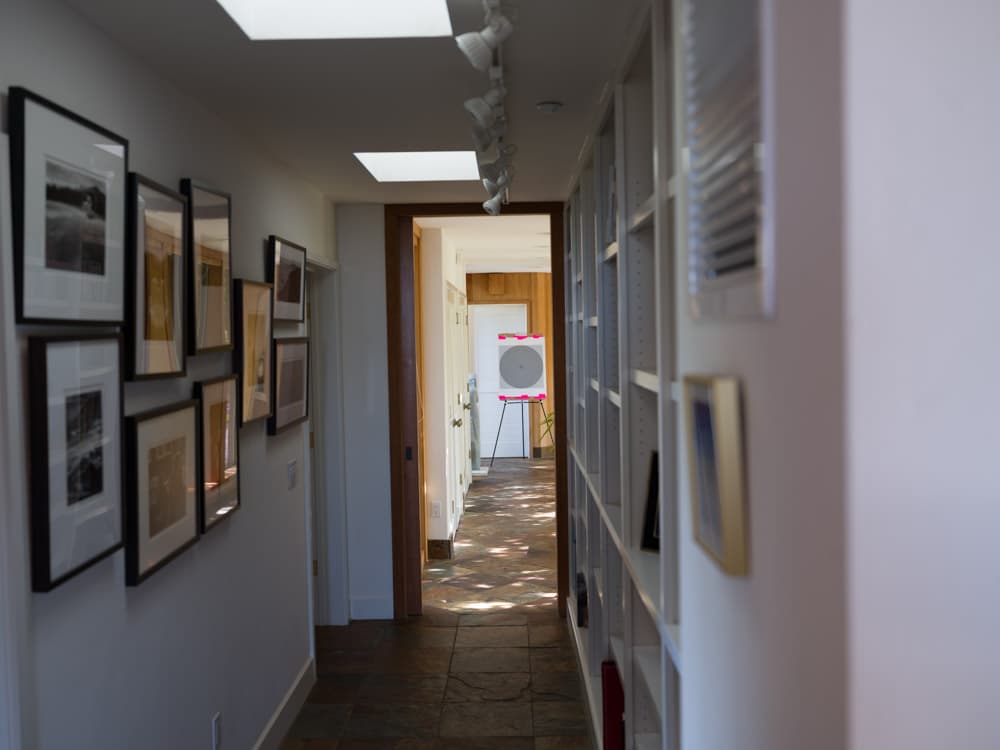
Target distance was 14 meters.
Test conditions:
- The heaviest RRS legs
- Arca Swiss C1 head
- ISO 100
- Electronic shutter 1/10 at f/4, 1/5 at f/5.6, and 1/2.5 at f/8
- 2-second self-timer
- AF-S, medium spot size
- 3 sets of shots at each test condition
- Developed in Lightroom
- Picked best shot of each test condition
- Sharpening amount 20 radius 1, detail 0 (much less sharpening than the default)
- Adobe Color profile
- White balanced to grey background
We’ll look at some tight crops at about 130% magnification.
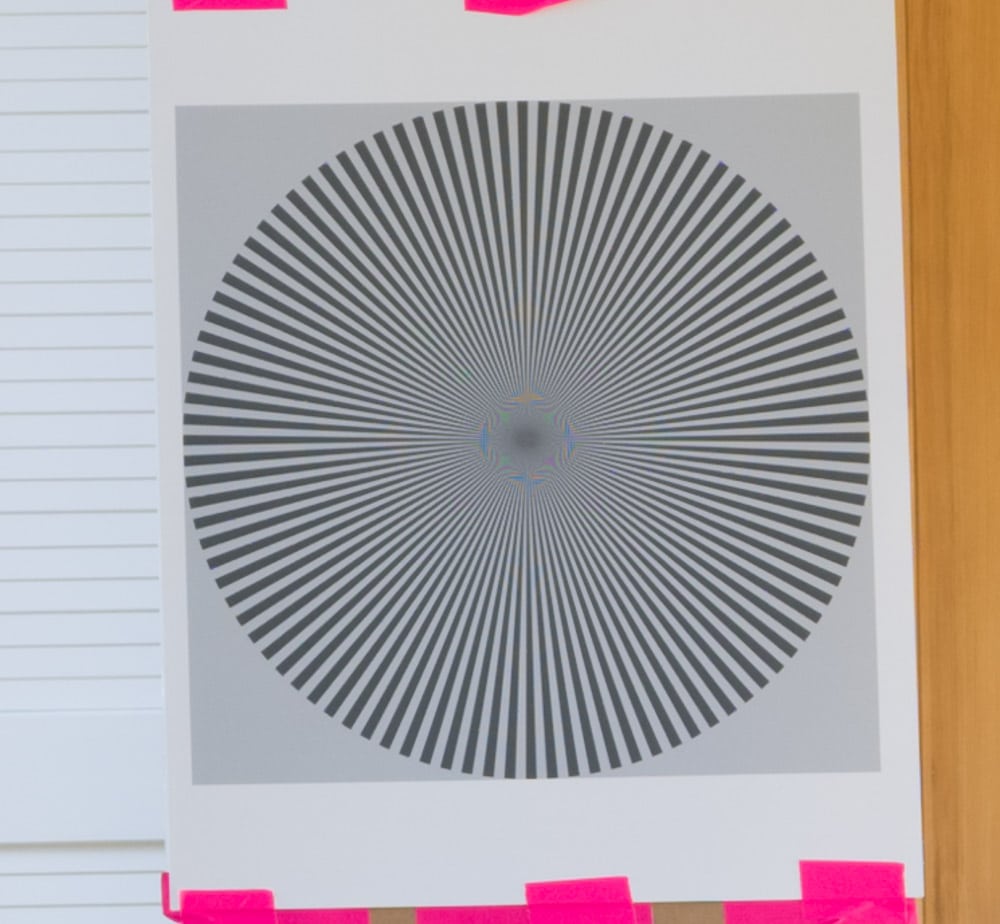
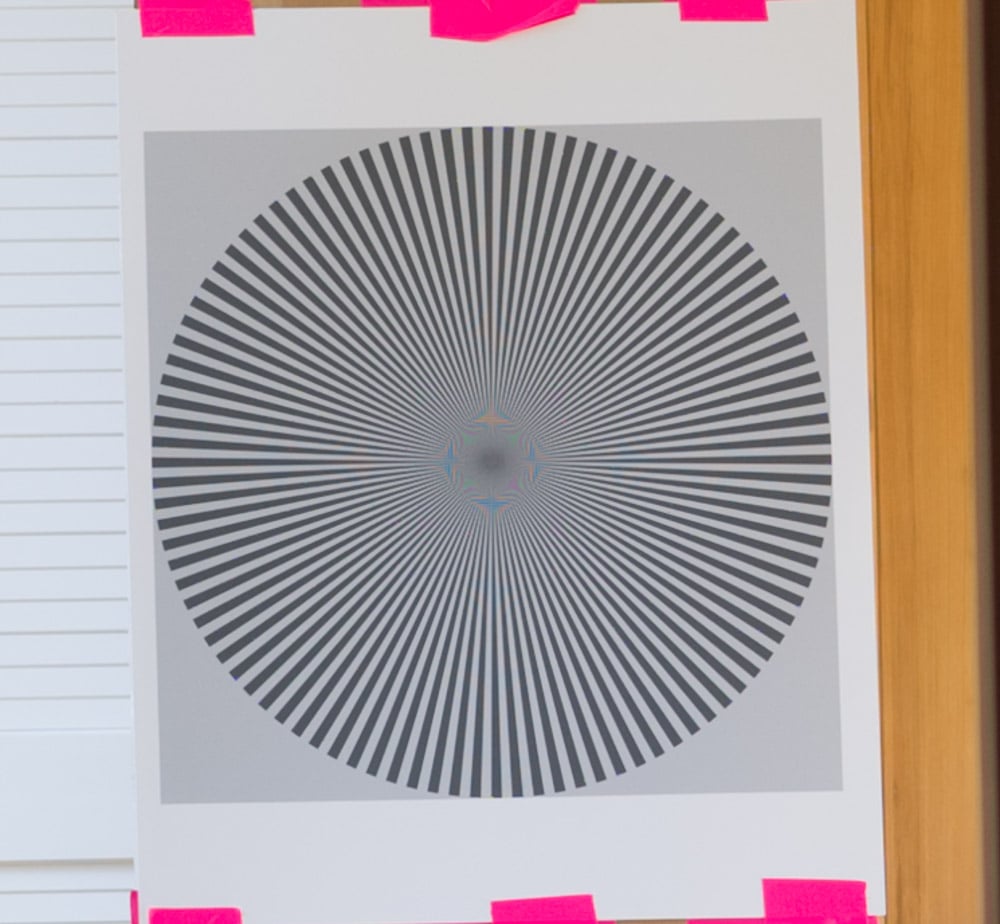
The prime is slightly sharper, but not enough to make a difference in real-world photography.
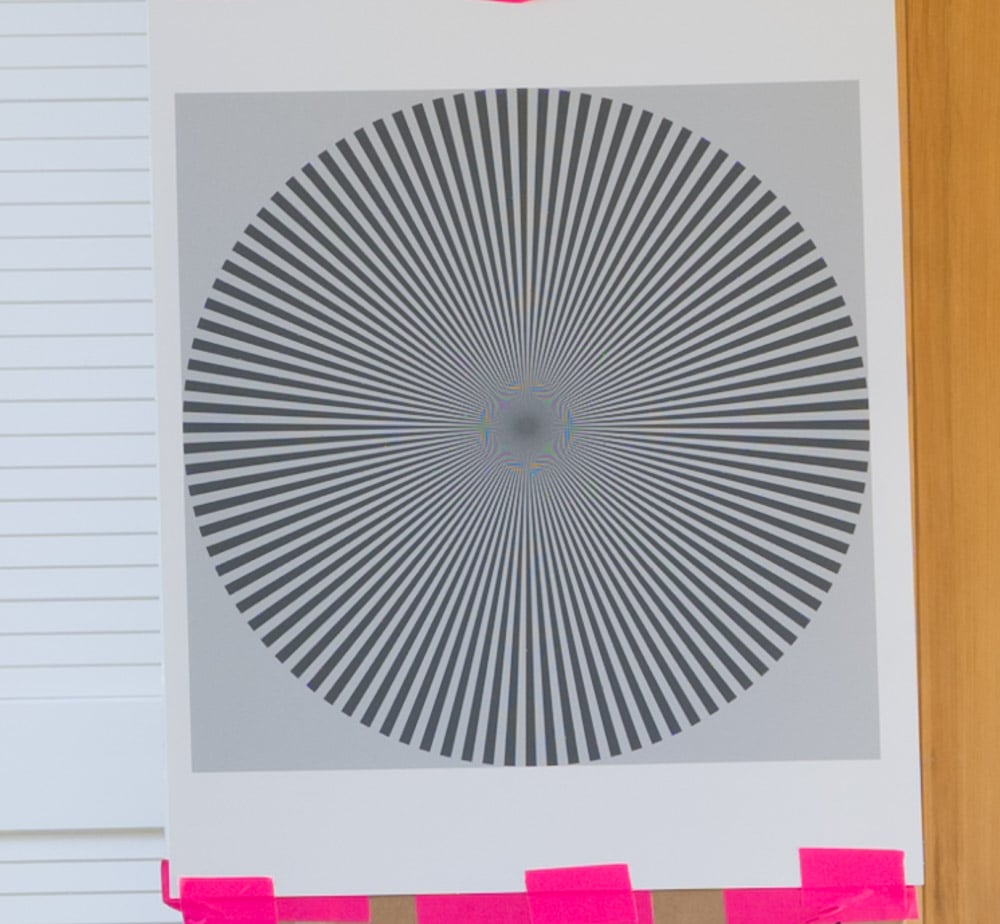
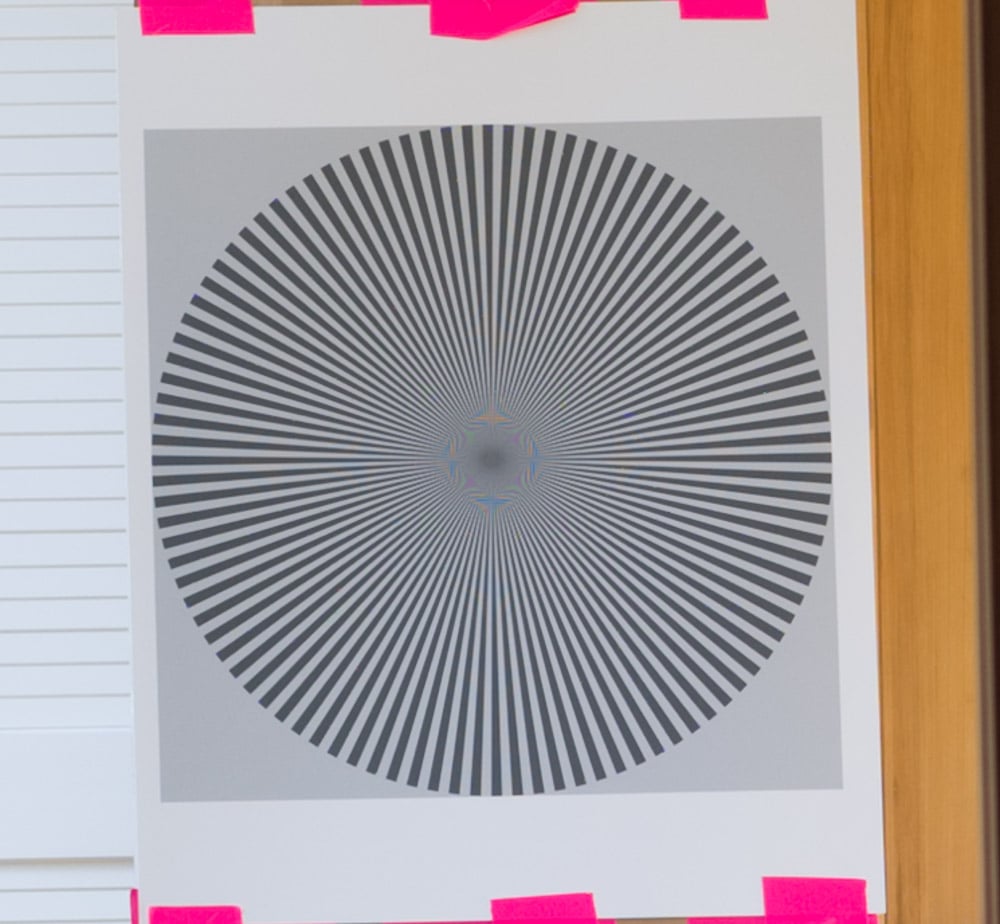
I call that a wash.
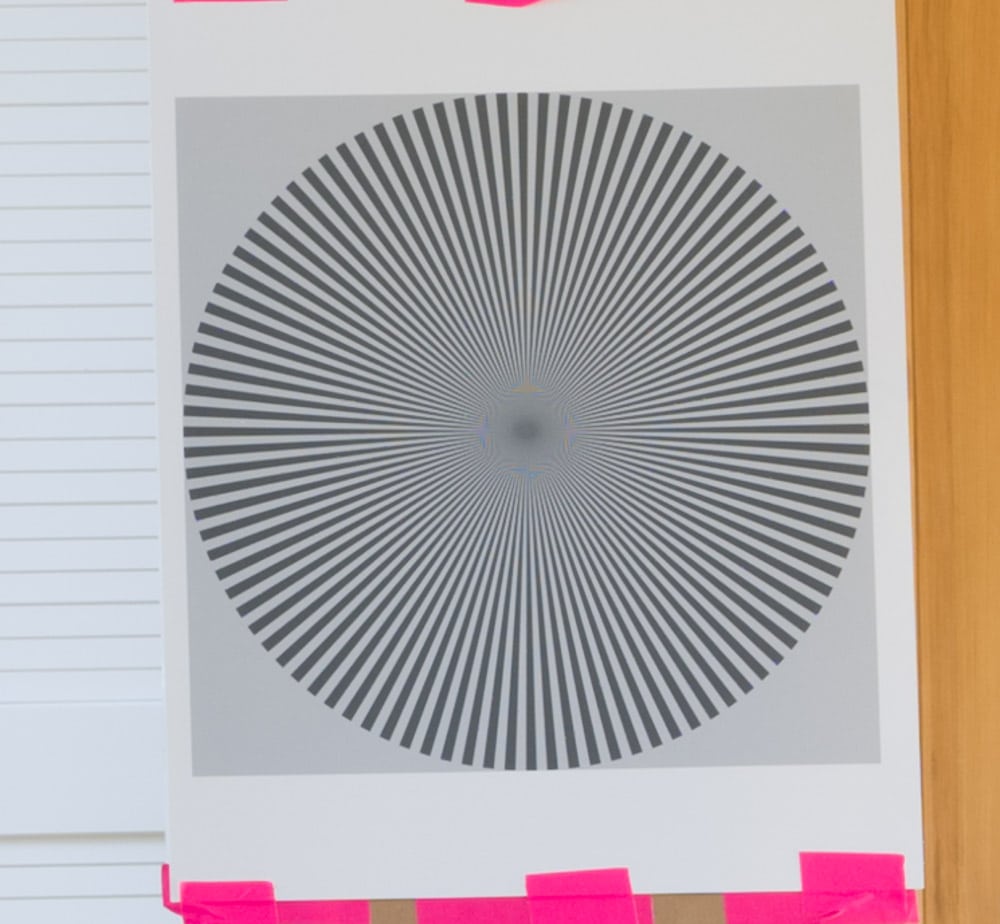
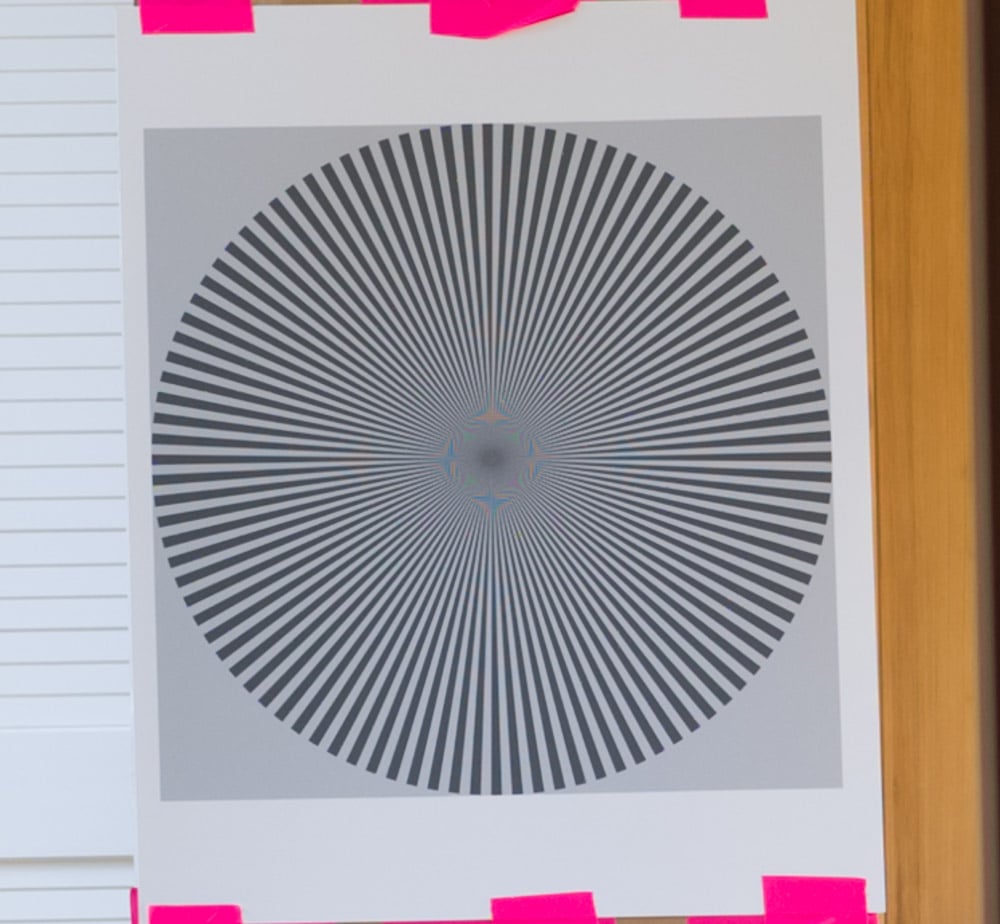
Also a push.
In the upper-right corner:
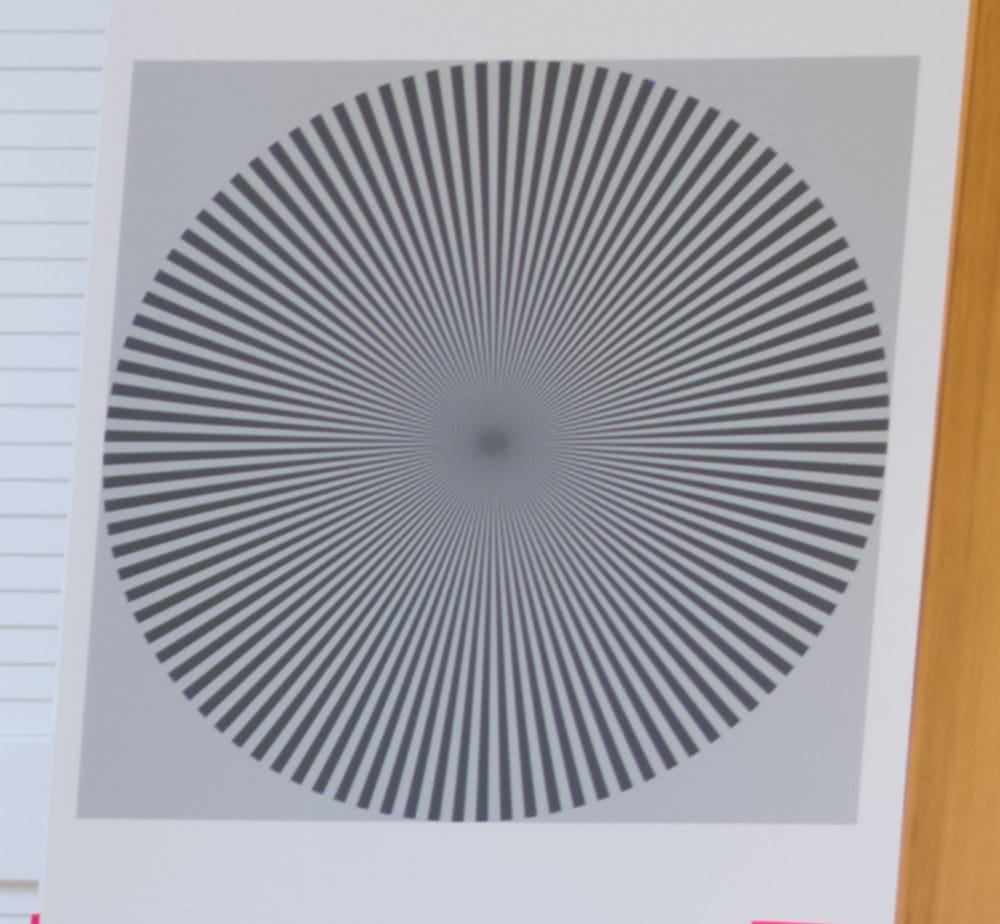
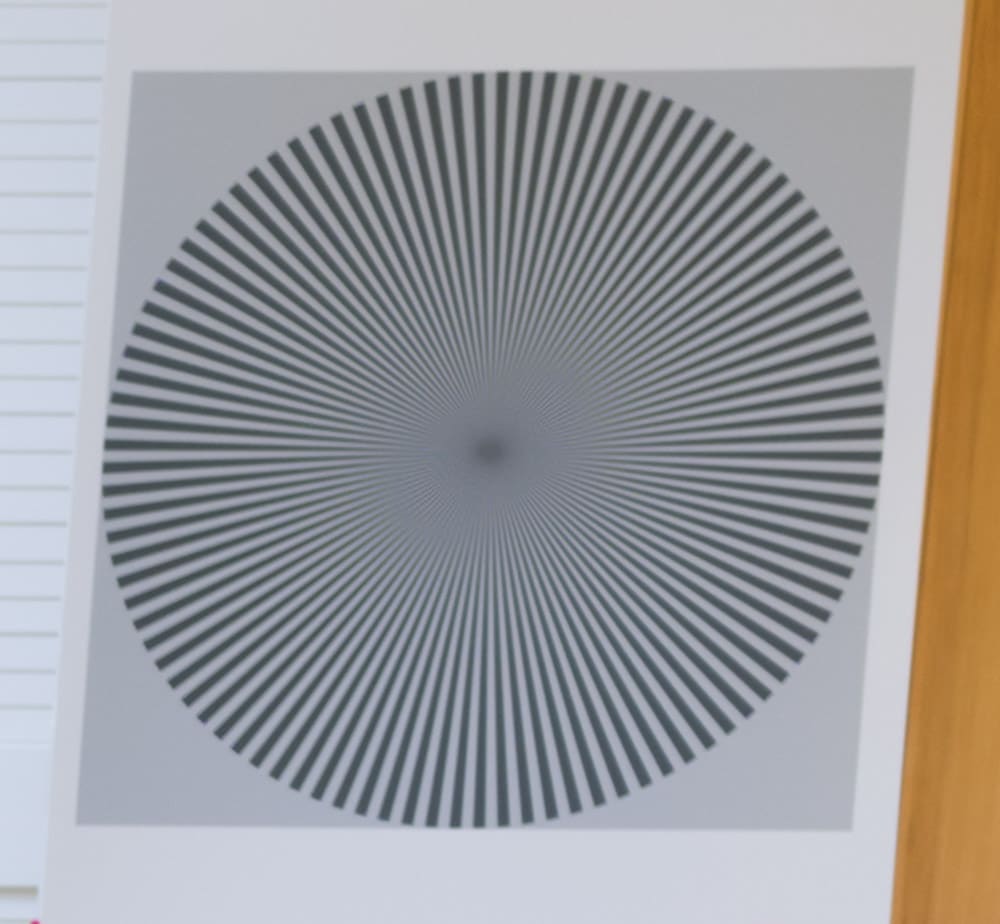
Very close. The sagittal and tangential sharpnesses are more different in the case of the prime, which is not what I’d expect.
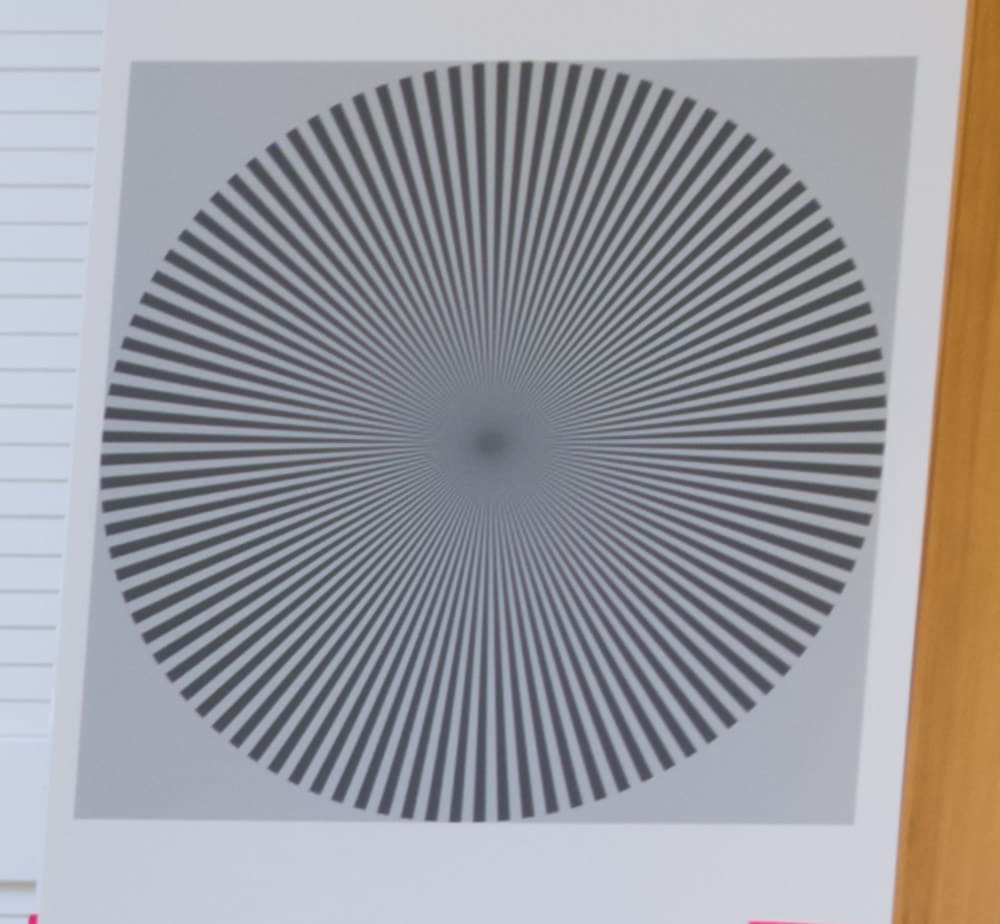
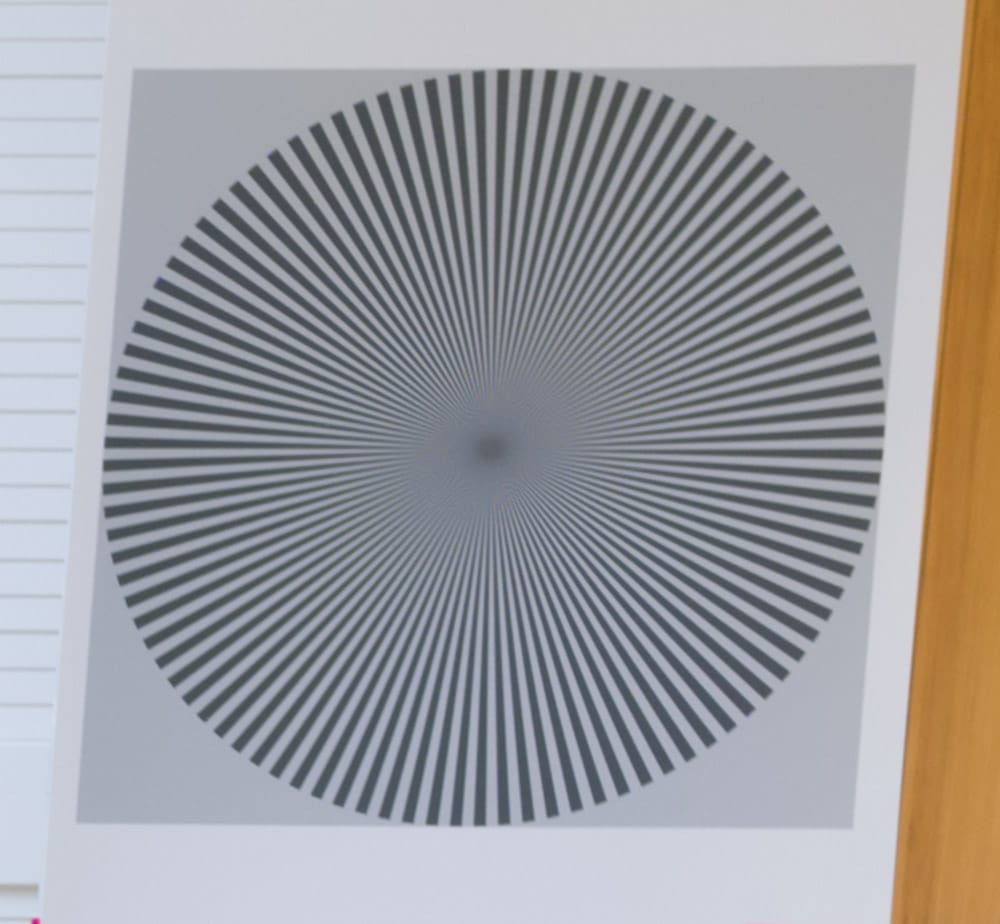
The prime is a little sharper.
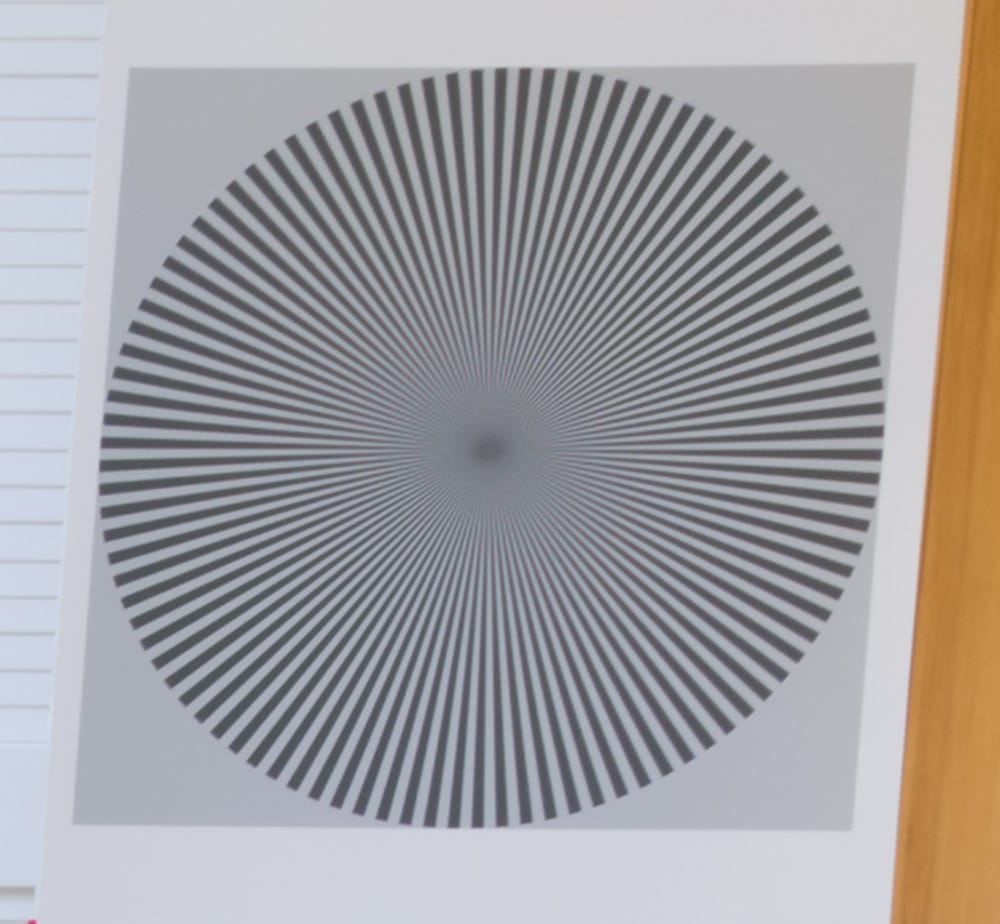
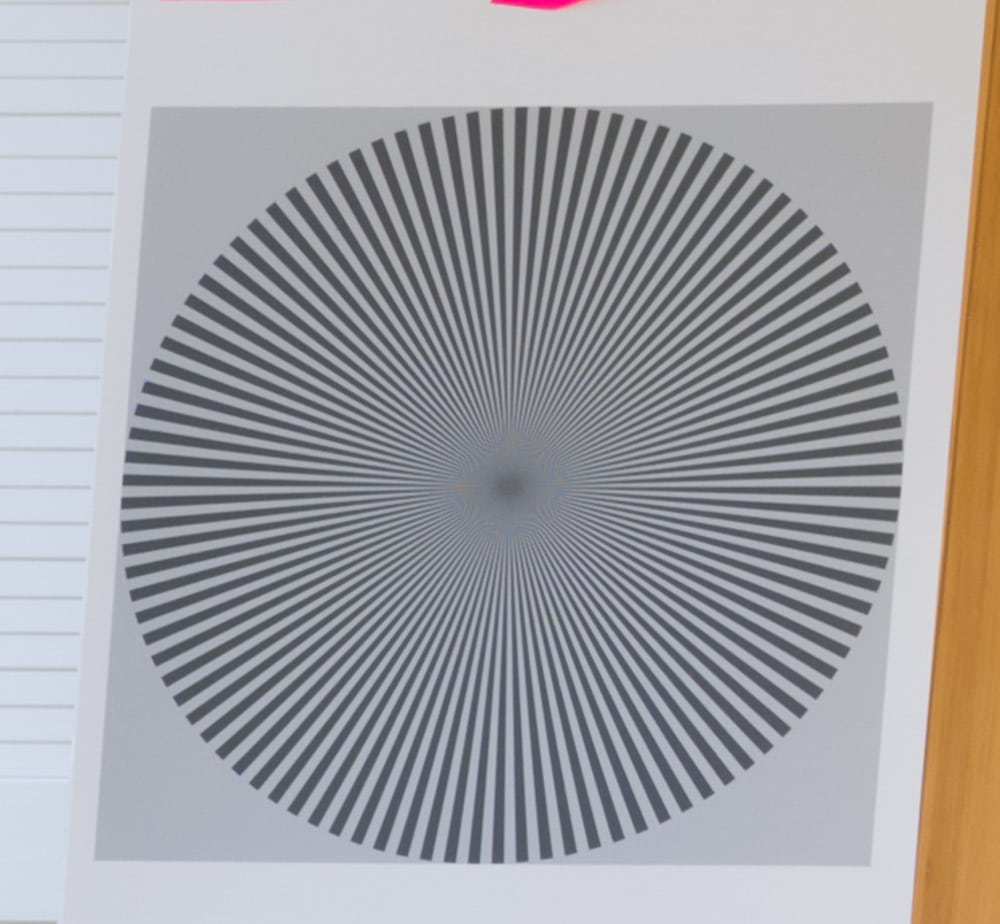
The prime is better.
I am amazed at how well the 45-100 did in comparison tot he 45/2.8 in this test.
Jim, I run Alpa, Phase One, Sony and Fuji systems, and have been rather disappointed with the Fuji MF lenses to be honest. If you are coming from FF, or use the 50mp body, you’ll likely be happy enough, but at 100mp, compared to a Phase or Rodenstock/ Schneider tech cam lens, they are not all that. I had the 45mm and 63mm and sold them both – poor resolution off center. I kept the 50mm and 110mm only. The 50mm because its small and ok (but note it’s a $500/600 pancake lens, and should be nothing like the $1000 they ask) and the 110mm because it’s probably their best.
Fuji badly need to release some premium lenses for 100mp, even if they are more $. And if, as rumored, pixel shift 400mp firmware upgrade for GFX-100 is coming, then they definitely need to up their game.
So does phase one. Their BR lenses have a huge sample variation and nothin from them can beat Fuji’s 23, 110,120 or 250mm.
It’s true that there is a big sample variation on the 45,63 and their zooms.
However, just take a look how bad phase ones best lens the new 150/2,8 is with purple fringing… horrible.
Hi,
The Siemens targets Jim uses in his testing clearly indicate that most Fujifilm lenses he tested on the GFX 100 ‘outresolve’ the sensor, although I would prefer to use some other term.
If the converging spokes of the Siemens star start to bend, that is a clear indication that the lens still delivers significant contrast at the pixel level.
More learned gentlemen than myself write that using pixel shift does not increase resolution but would counter act aliasing.
So, it would seem that Jim’s experience is that the Fujifilm lenses are good enough for the GFX 100 and would need quite a bit more pixels for optimal resolution.